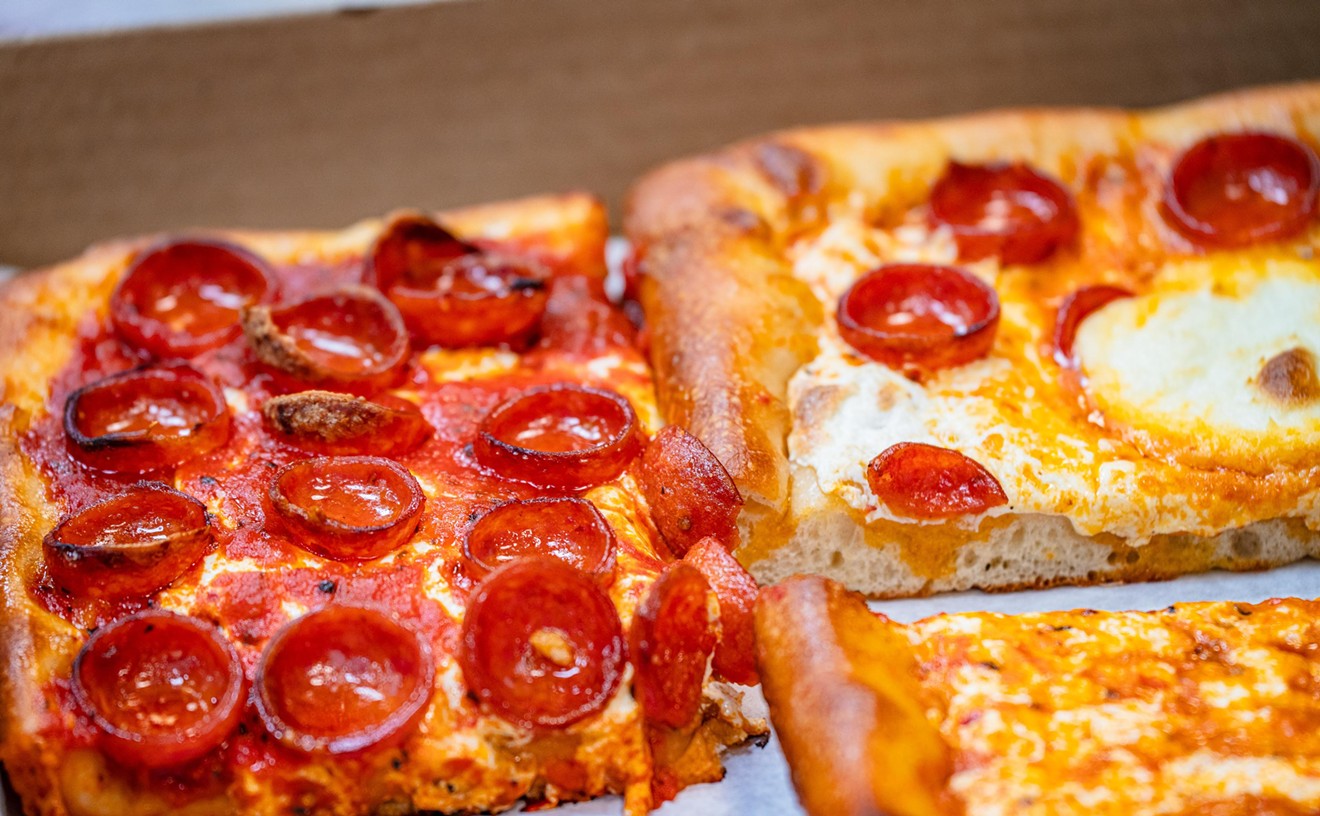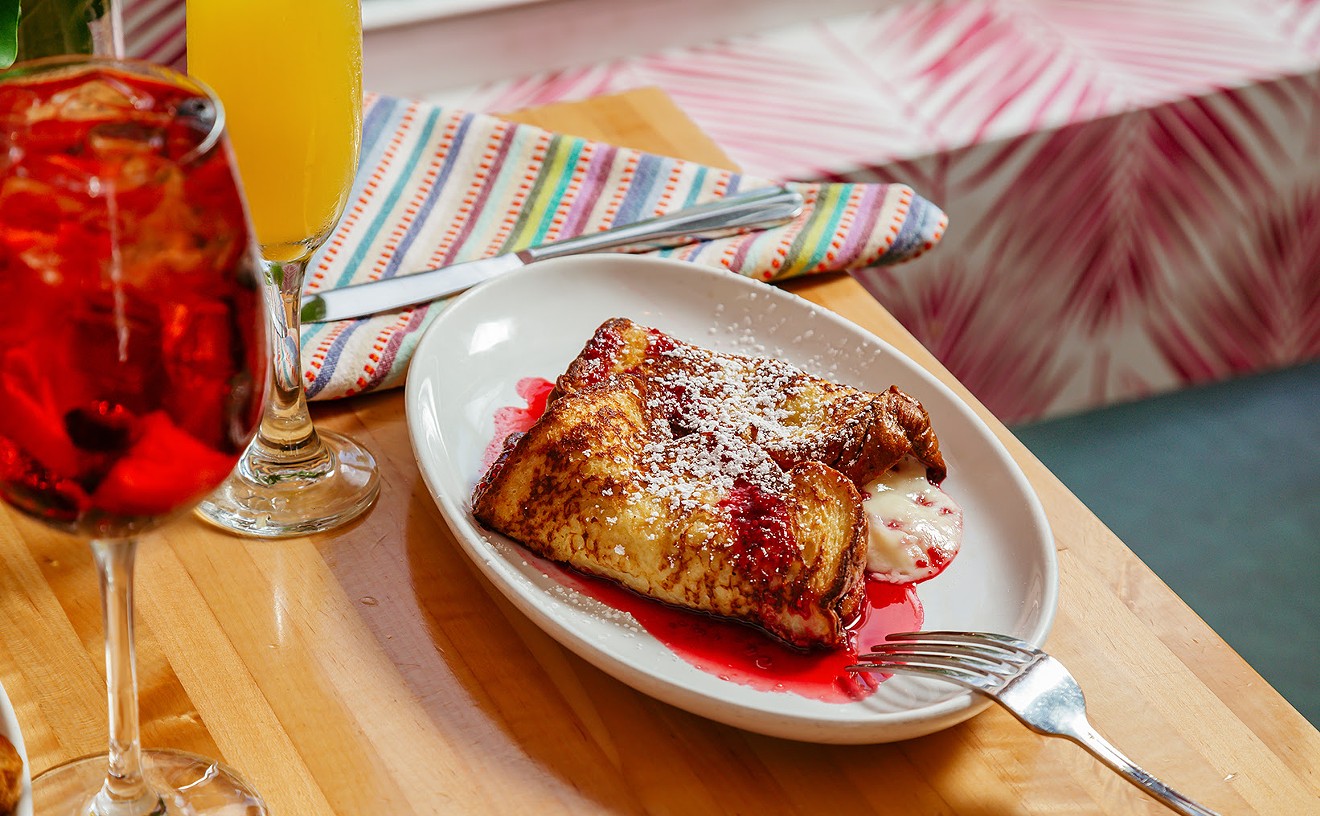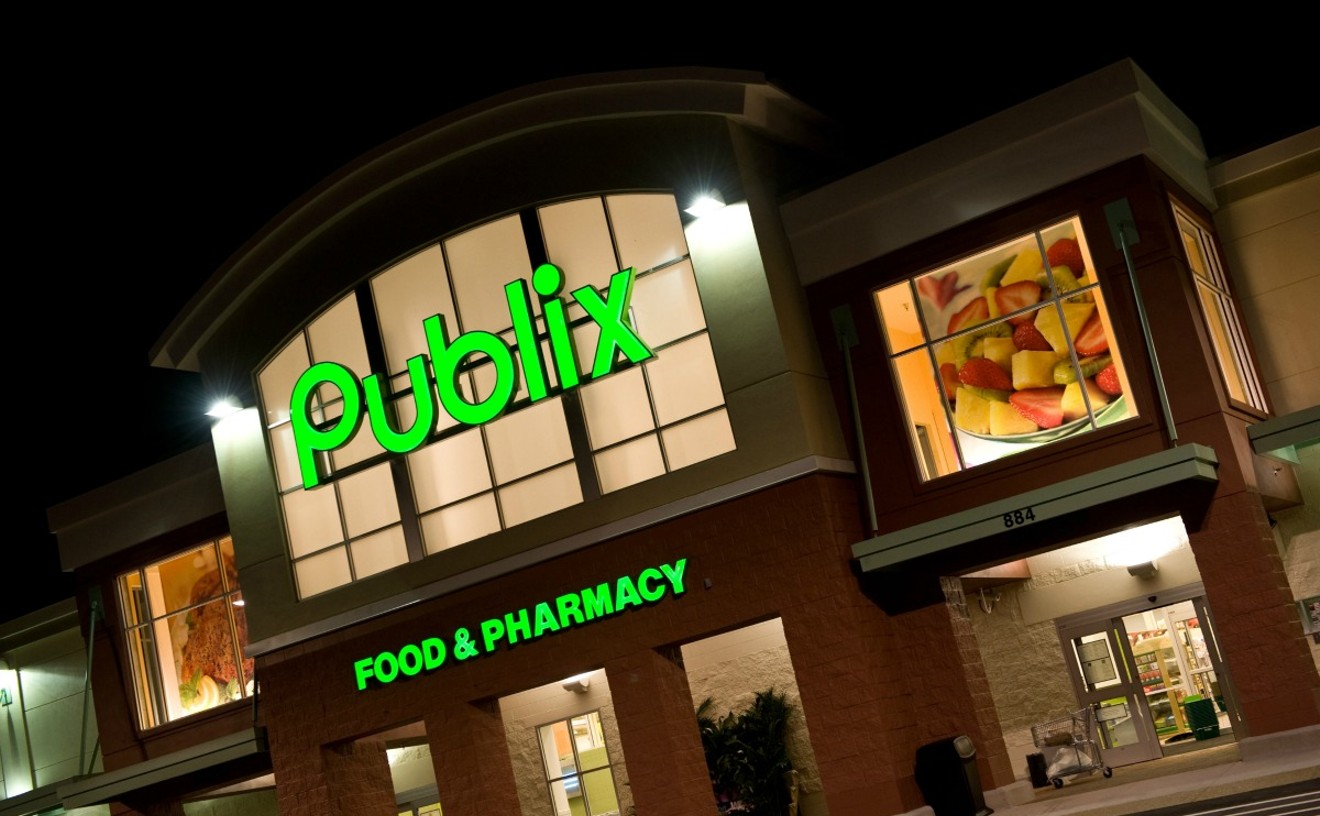In the past couple of years, Miami's food scene has joined the ranks of the nation's greatest dining destinations. The New York Times' Frank Bruni cited the rising Design District, including Michael's Genuine Food & Drink, for its great potential. Bon Appétit named Yardbird Southern Table & Bar among the nation's 50 best new restaurants. And the New York Post declared South Beach part of "a Miami food scene that's really catching up to the rest of America."
Though the Magic City still isn't San Francisco or New York, the past year has seen an impressive new lineup of small, low-to-mid-priced, chef-driven eateries such as My Ceviche, Blue Collar, the Federal, Macchialina, and Josh's Deli. Three powerhouse toques — José Andrés (the Bazaar), Katsuya Uechi (Katsuya), and Jean-Georges Vongerichten (J&G Grill) — also arrived in the past 12 months.
Wynwood continued to rise with additions like Bloom, Pride and Joy, and Wood Tavern. The same goes for midtown and the Design District — with the opening of Salumeria 104, Oak Tavern, South Street, and MC Kitchen.
But many pieces of the local culinary puzzle are still missing. After a painstaking study of the city's current food scene, New Times herein proclaims 2012 the year of the vod-bomb. Yes, we mean the ubiquitous drink known as the vodka Red Bull, the speedball, and the VRB. Why, you ask? Because while we benefited from a handful of Red Bull-induced uppers, we also coped with a bounty of vodka-inspired downers. So sit down, grab a caffeinated cocktail, and sample these top 12 uppers and downers of Miami's dining scene in 2012.
Top Six Uppers
1. Some food trucks go brick-and-mortar; others head to South Beach. Food trucks such as Latin House Grill and Yellow Submarine food trucks traded in their wheels for eateries. The two Kendall restaurants are now known as the Latin House Burger & Taco Bar and Rock That Burger. For those who stuck with the mobile-restaurant theme, there was some good news: As of September, South Beach allowed public food-truck roundups.
2. Are arepas the new burger? La Latina opened in late 2011, but the tiny arepa shop wasn't discovered by midtown masses until early 2012. Other areperia debuts include Brickell openings: Budare Bistro, Arepazo 2 (originally in Doral), and a new La Moon location.
3. Reeling in more seafood. In March 2012, James Beard Foundation semifinalist and ex-BLT Steak executive chef Sam Gorenstein opened a take-out and delivery joint in South Beach that sells local, delicious, affordable seafood. Other notable seafood eateries expanded: Casablanca Seafood Bar & Grill opened a second restaurant named Casablanca on the Bay in Edgewater, and old-time favorite La Camaronera underwent renovations to implement table service.
4. From popping bottles to slurping vegan juicing regimens. Juicing developed a cult following in Miami after the opening of Jugofresh, a brand of cold-pressed organic juices. Vegan and/or gluten-free bakeries (mostly home-based) have likewise flourished: Bunnie Cakes, Om Nom Nom Cookies, Peace A' Cake, the House of V, and Ginny Bakes. In 2013, we foresee a trend: More vegetarian, vegan, and health-minded eateries will make their way to the Big Orange.
5. Miami learns the art of the pop-up, sort of. Chef Giorgio Rapicavoli opened the pop-up Coral Gables restaurant Eating House for about six months. Following that success, the eatery turned permanent in November. Elad Zvi and Gabriel Orta — the cocktail duo also known as Bar Lab — also popped up with the bar Broken Shaker. It opened in January, closed six months later, and then re-opened in December as a fixture at the Freehand Miami. Two things of note: Mixology is booming, and Miami loves pop-ups that don't really close.
6. Local food gets bigger and drunker. Miami already knows that local produce means better-tasting produce, and this year saw a greater emphasis on local ingredients at eateries and markets. Mandolin Aegean Bistro even launched an organic edible garden. In terms of booze, venues such as Gordon Biersch Brewery Restaurant, Harry's Pizzeria, Lokal Burgers & Beer, and Dome Restaurant began supporting Drink Like a Local — a community of Florida craft breweries. Michael Schwartz also launched a homebrew under the moniker Michael's Genuine Home Brew. We bet Florida craft beers and microbreweries will be even bigger next year. Bud Light, watch out.
Top Six Downers
1. Miami lacks a major fish and/or farmers' market. Think Pike Place Fish Market in downtown Seattle. Or Greenmarket in New York. The absence of a real-deal fish market is stinking up the otherwise swelling local seafood scene. Meanwhile, Miami still hasn't learned the difference between a flea market and a farmers' market. Just to throw a couple out: The city could also use more locally owned cheese, butcher, and ice-cream shops.
2. Food-truck woes. Wynwood's monthly food-truck roundup — held during Second Saturday Art Walk — was plagued by permitting issues this past year. Some trucks, such as Sugar Rush, Gypsy Kitchen, and Coolhaus, were permanently shut down, moved out of state, or used solely for catering gigs.
3. The boutique burger scene is crazy, seriously. Most burger joint openings were chain-owned: Shake Shack opened a Gables location, its second in Miami-Dade; Fort Lauderdale-based ROK:BRGR expanded to South Miami; BurgerFi ventured to Aventura; and Elevation Burger opened near Dadeland Mall. This year also saw the closing of Damn Good Burger in downtown. Five Napkin Burger is now called Five Napkin Grill, after it traded its flattop for a grill. But 2012's most notorious burger story involves Joshua Woodward, the restaurateur who, along with chef Govind Armstrong, owned Table 8 and 8 Oz. Burger Bar in both Los Angeles and Miami. In September, 8 Oz. partner Eric Fried renamed the Alton Road restaurant and dubbed it American Burger. In October, Woodward was arraigned on attempting to induce a miscarriage in his then-girlfriend in 2009. A few weeks later, American Burger closed and Armstrong announced his intent to open a new 8 Oz. locale on Lincoln Road. Now that's crazy.
4. (Un)sustainability? Two popular farm-to-table eateries closed this year. Sustain Restaurant + Bar ended its year-and-a-half run in midtown. And James Beard Award-nominated chef Kris Wessel shuttered his Upper Eastside restaurant, Red Light Little River. (Wessel has since headed to South Beach with the opening of the ritzy Florida Cookery at the James Royal Palm Hotel.)
5. Not-so-pacific in the Design District. Michelle Bernstein closed her critically acclaimed Sra. Martinez, parted ways with the Omphoy Ocean Resort in Palm Beach, and, after just two short months, shuttered her casual café Crumb on Parchment at the Webster. In 2012, Michy's empire took quite a beating. There was also somber news related to Jonathan Eismann, once considered one of Miami's top restaurateurs. He owned the Design District's Pacific Time, Fin, Q, and Pizza Volante but closed the eateries a few years ago. Then, this past October, he allegedly struck and killed a pedestrian in a hit-and-run accident. No charges have been filed, but the tragedy has certainly left its mark.
6. Bakeries open but fail to impress. Miami experienced an unforeseen bakery boom, courtesy of Acme Bakery & Coffee, Lee & Marie's Cakery, and Corner Bakery. Although it was a step in the right direction, none of these spots compares to the world-class bakeries in cities such as New York and San Francisco. Our bet: It'll take a gifted toque like Hedy Goldsmith or an out-of-state import (Thomas Keller? Joanne Chang? Anyone?) to cure Miami's bakery blues.









